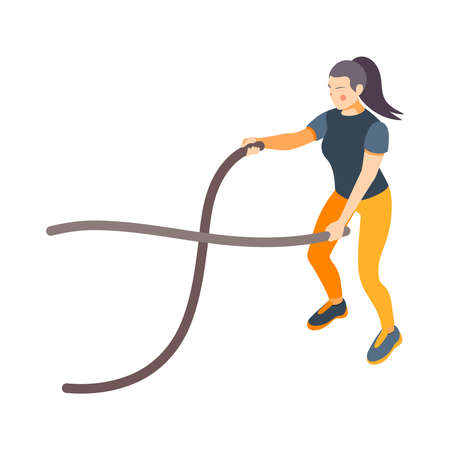1. Why Choosing the Right Hiking Shoes Matters
When it comes to hiking in the U.S., whether youre exploring the rugged Rockies, lush Pacific Northwest trails, or dusty Southwest canyons, picking the right hiking shoes is a game changer. The right pair doesnt just help you stay comfortable—they also keep you safe and boost your performance on all kinds of American terrains.
Comfort Makes Every Mile Enjoyable
No one wants sore feet halfway through a hike. Good hiking shoes are designed with cushioning and support that keep your feet feeling good, even after hours on rocky paths or muddy forest trails. Lightweight materials and breathable fabrics make a big difference, especially when temperatures soar or humidity rises.
Injury Prevention: Stay Safe on the Trail
American hiking trails can be unpredictable—think loose gravel in Utahs national parks or slippery roots in New England forests. The right shoes offer traction, ankle support, and shock absorption to help prevent twisted ankles, blisters, and slips. Wearing shoes made for hiking means you’re less likely to get hurt, so you can focus on enjoying the scenery instead of worrying about your next step.
Performance Across Diverse U.S. Terrains
The U.S. offers everything from sandy desert trails to steep alpine routes. That’s why it’s important to pick shoes that match where you’re going. Some features to look for include waterproofing for wet climates, aggressive tread for muddy or snowy areas, and lightweight designs for long-distance treks.
Key Features of Quality Hiking Shoes
| Feature | Why It Matters | Best For |
|---|---|---|
| Cushioning | Reduces foot fatigue and impact on joints | All-day hikes, rocky trails |
| Traction | Prevents slipping on loose or wet surfaces | Muddy forests, rocky mountains, snow-covered paths |
| Ankle Support | Helps prevent sprains and twists | Rugged or uneven terrain |
| Waterproofing | Keeps feet dry in rain, streams, or snow | Pnw trails, wet climates, stream crossings |
| Breathability | Reduces sweat and overheating | Hot weather hikes, desert terrain |
Remember:
The best hiking shoes for women combine comfort, protection, and performance. With the right pair underfoot, every trail across the United States becomes more inviting—no matter how challenging the journey ahead.
2. Key Features to Look for in Women’s Hiking Shoes
When searching for the best hiking shoes for women, especially for tackling diverse U.S. terrains, it’s essential to focus on features that ensure both comfort and reliable performance. Here are the key factors every woman hiker should consider:
Fit: The Foundation of Comfort
A good fit is non-negotiable. Hiking shoes that fit snugly—without pinching or slipping—will help prevent blisters and fatigue. Try shoes on with your favorite hiking socks and make sure there’s a thumb’s width of space at the toe box for downhill walks.
Grip: Traction for Every Trail
U.S. trails range from rocky Appalachian paths to muddy Pacific Northwest forests. You’ll want an outsole with deep, sticky lugs that offer excellent traction on both wet and dry surfaces. Vibram soles are popular for their reliability across different terrains.
Durability: Built to Last
Look for high-quality materials like reinforced leather, strong mesh, and sturdy rubber soles. These materials withstand repeated use and protect your feet from rocks, roots, and uneven ground.
Waterproofing: Stay Dry, Go Farther
From sudden rain in the Rockies to crossing shallow streams, waterproofing keeps your feet dry and comfortable. GORE-TEX linings or proprietary waterproof membranes are favorites among American hikers who don’t let weather stop their adventures.
Breathability: Cool and Comfortable
Warm weather hikes call for shoes with breathable mesh panels that allow heat and moisture to escape. This helps prevent sweaty feet and reduces the risk of blisters during long treks under the sun.
Quick Comparison Table: Must-Have Features
| Feature | Why It Matters | U.S. Terrain Example |
|---|---|---|
| Fit | Reduces blisters, improves comfort | Canyon hikes in Utah require snug support for descents |
| Grip | Prevents slips on rugged paths | Mossy trails in the Pacific Northwest need strong traction |
| Durability | Adds lifespan to your gear | Rocky Adirondack routes demand tough materials |
| Waterproofing | Keeps feet dry in wet conditions | Sierra Nevada stream crossings benefit from water protection |
| Breathability | Cools feet, prevents overheating | Hot summer hikes in Arizona require airflow |
Selecting hiking shoes with these features will set you up for success on any American trail—from misty mountains to sun-soaked deserts—so you can focus on enjoying the journey ahead.

3. Top Picks: Best Hiking Shoes for Women in the U.S.
Finding the right pair of hiking shoes can make all the difference when you’re hitting America’s diverse trails, from the rugged Rockies to scenic East Coast paths. Here are some of the top-rated women’s hiking shoes that American hikers love for their comfort, durability, and performance on different terrains.
Highly-Rated Women’s Hiking Shoes
| Brand & Model | Key Features | Best For |
|---|---|---|
| Merrell Moab 3 | Excellent traction, breathable mesh lining, cushioned support | All-around trails, day hikes, rocky terrain |
| Salomon X Ultra 4 GTX | Waterproof Gore-Tex lining, aggressive grip, lightweight design | Muddy or wet trails, mountain hikes |
| Keen Targhee III Waterproof | Wide toe box, waterproof protection, sturdy build | Packed dirt trails, forest hikes, wider feet |
| Altra Lone Peak 7 | Zero-drop platform, roomy fit, excellent cushioning | Long-distance hikes, thru-hiking, flat-footed hikers |
| Columbia Newton Ridge Plus Amped | Affordable price, classic leather look, durable sole | Casual hikes, beginner hikers, mixed terrain |
| The North Face Vectiv Exploris Futurelight | Modern design, responsive midsole, waterproof membrane | Technical trails, rainy weather, fast-paced hikes |
| La Sportiva Spire GTX | Advanced waterproofing, superior stability, breathable upper mesh | Challenging elevation gain, rocky and uneven surfaces |
What Makes These Shoes Stand Out?
- Comfort: All these models offer supportive midsoles and enough room in the toe box—perfect for long days on U.S. trails.
- Performance: From waterproof membranes to aggressive outsoles and protective features, these shoes handle everything from Appalachian mud to dusty desert paths.
- Cultural Popularity: These brands are trusted by American outdoor enthusiasts and frequently recommended in local hiking groups and forums.
- Diversity of Fit: Whether you have narrow or wide feet or need extra arch support, there’s a shoe here designed for your needs.
Choosing the Right Pair for Your Adventures
If you’re planning day hikes in national parks or multi-day backpacking trips through iconic U.S. landscapes like Yosemite or Zion, it’s essential to match your shoe choice with your typical terrain and hiking style. Try them on with your favorite hiking socks and walk around the store (or your home) before hitting the trail to ensure the best fit. Many of these options come in both regular and wide sizes to accommodate different foot shapes.
Your Trail-Ready Checklist:
- Cushioning for comfort over miles of trail
- Tough soles for rocky paths and slippery slopes
- A snug but not tight fit to prevent blisters on longer hikes
- The right level of waterproofing based on your local climate and trail conditions in the U.S.
- A style you’ll feel good wearing both on and off the trail!
No matter where your next adventure takes you—from the Grand Canyon to your favorite state park—one of these top picks will help keep your feet happy along every mile.
4. Matching Shoes to U.S. Terrains and Trails
Hiking across the United States can mean anything from climbing rocky peaks to strolling through lush city parks. Choosing the right hiking shoes for your adventure is key for comfort and safety. Here’s a simple guide to help you pick the best women’s hiking shoes for different American terrains.
Choosing Hiking Shoes by Terrain
| Terrain Type | Recommended Shoe Features | Why It Matters |
|---|---|---|
| Rocky Mountains & Steep Trails | Sturdy outsole, strong ankle support, aggressive tread, toe protection | Protects feet from sharp rocks and provides grip on uneven surfaces. |
| Muddy Forests & Wet Woods | Waterproof membrane, deep lugs, moisture-wicking lining, mid-cut design | Keeps feet dry and stable on slippery ground. |
| Desert Hikes (e.g., Southwest US) | Breathable mesh, lightweight build, good ventilation, light-colored upper | Prevents overheating and allows sand to escape easily. |
| Urban & Paved Trails | Cushioned sole, flexible design, low weight, stylish look | Adds comfort for long walks on hard surfaces and fits city style. |
Extra Tips for the Perfect Fit
- Try Shoes with Socks: Always test new hiking shoes with the socks you plan to wear on hikes.
- Sizing Matters: Feet swell during long walks—consider sizing up a half size for hikes over 5 miles.
- Lacing Techniques: Learn different lacing patterns to improve comfort or prevent heel slipping on specific trails.
- Tread Test: Check how grippy the soles are on both dry and wet surfaces before heading out.
Your Trail, Your Choice!
The right hiking shoes can turn a tough trail into a fun adventure. Match your shoes to your favorite American terrain to stay comfortable and ready for any trail you explore!
5. Care and Maintenance Tips for Long-Lasting Performance
Keeping your hiking shoes in top shape is key to enjoying every mile of the diverse U.S. trails, from the rocky paths of the Rockies to the forested routes in Appalachia. Here’s how you can make your hiking shoes last longer and keep them comfortable for every adventure.
Cleaning Your Hiking Shoes
Regular cleaning removes dirt, mud, and debris that can break down shoe materials and affect performance. Follow these easy steps:
| Step | Action | Tips |
|---|---|---|
| Remove Laces & Insoles | Take out laces and insoles before cleaning. | This allows for a deeper clean and faster drying. |
| Brush Off Dirt | Use a soft brush or old toothbrush. | Avoid stiff brushes to prevent damage to fabric or leather. |
| Wash Gently | Use lukewarm water with mild soap. | Never use harsh chemicals or put them in a washing machine. |
| Rinse Thoroughly | Make sure no soap residue remains. | Soap left behind can weaken materials over time. |
Drying Your Hiking Shoes Properly
Correct drying prevents odor, mold, and material breakdown:
- Air dry only: Avoid direct sunlight or heat sources like radiators, which can crack leather and melt adhesives.
- Stuff with newspaper: This helps absorb moisture inside the shoes and keeps their shape. Replace paper as it gets damp.
- Laces & insoles: Dry separately for best results.
Maintaining Trail Performance
A little regular maintenance goes a long way for durability and comfort on all types of American terrain:
- Condition leather: Use a specialized conditioner to prevent cracking if your shoes are made of leather.
- Treat waterproofing: Reapply waterproof treatments as needed, especially after deep cleans or heavy rain hikes.
- Inspect soles and seams: Check for separation or excessive wear. Address minor repairs early to avoid bigger problems later on the trail.
- Store correctly: Keep shoes in a cool, dry place—never in a hot car trunk or damp garage—to avoid warping or mildew.
Shoe Care Quick Reference Table
| Caring Task | How Often? |
|---|---|
| Clean off dirt/mud | After each hike (especially if muddy) |
| Deep clean & dry out fully | Every few hikes or after heavy use/rainy conditions |
| Treat waterproofing/leather conditioning | A few times per season or as needed based on conditions |
| Sole & seam inspection/repair | Monthly or before big trips |
| Proper storage (cool, dry place) | Always when not in use |
Your Trail Comfort Starts at Home!
A little attention after each hike ensures your shoes stay supportive, protective, and ready for whatever American trail you choose next. Proper care means you’ll get the most out of your investment—and many more miles under your feet!


